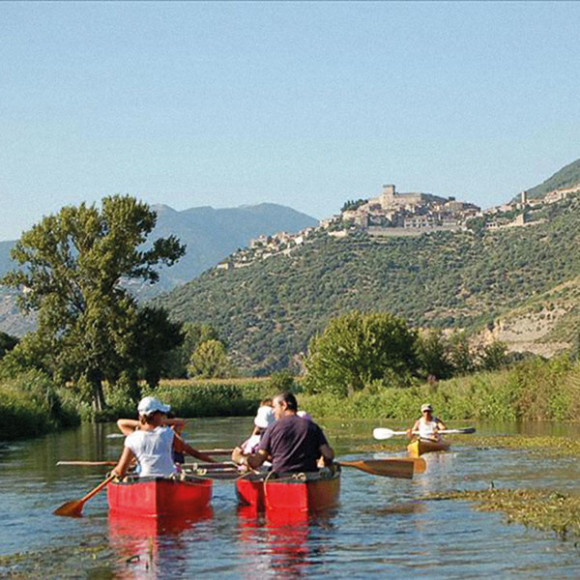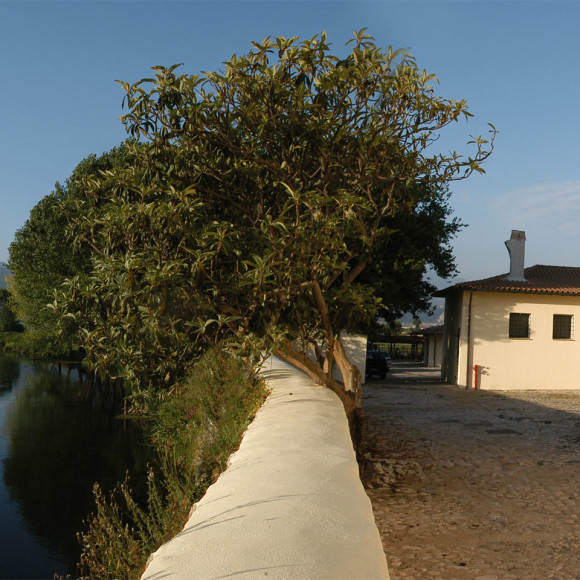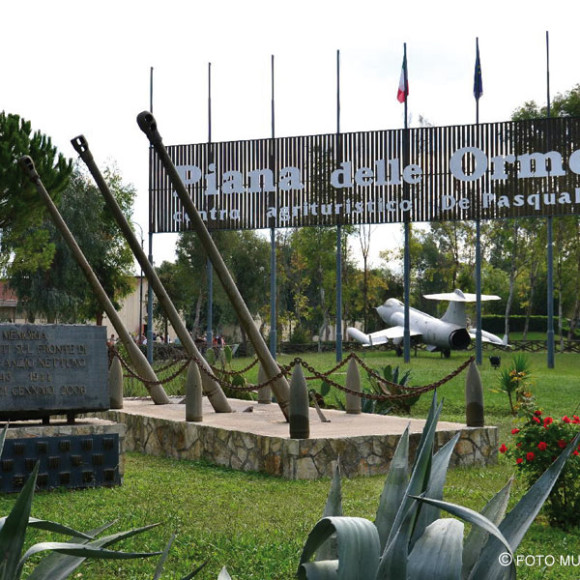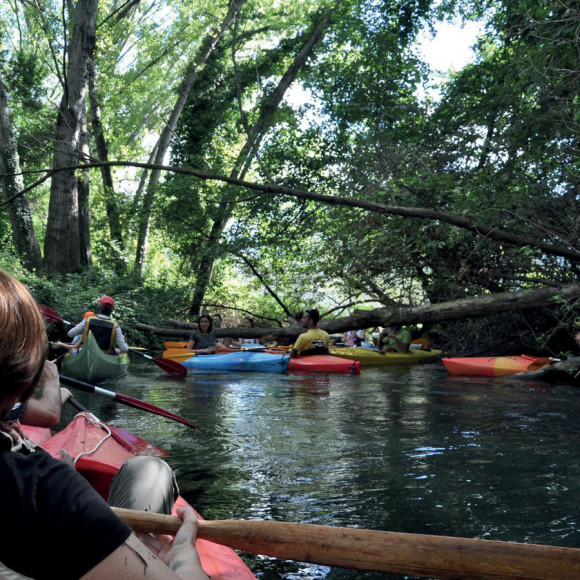Latina
Forget usual cities with medieval centers and baroque churches.Change your perspective and prepare to enter into a really unusual urban and architectural world.You will not find narrow alleys, only wide streets and squares decorated with palm trees, where the sky and the sun come from wherever, reflecting on the white travertine.Latina, in the south of Rome (70 km), 110.000 inhabitants, is the largest fascist foundation city andpreserves a historic center, unique in our country. In the past, it was nominated for the title of “World Heritage” by UNESCO. Located in the middle of that vast territory known since antiquity as the “Ager Pomptinus”, it was foundedin 1932 with the name of Littoria. The city slogan “Olim palus” recalls the original conditions of the area … once swamp. Latina is a town museum of the 20th century, an example of modern urban planning and it focuses on the peculiarities of its recent history. We will guide you through museums and municipal art collections. The center has developed around the two main squares: Piazza del Popolo, the City Hall with the characteristic Torre Civica and the so-called Fontana della Palla in the center. On one side of the square there is the Tax office; and the other square Piazza della Libertà, the Prefecture headquarter. Piazza del Popolo is cut through corso della Repubblica that borders Piazza San Marco, where stands St. Marco’s Cathedral, built like a Romanesque basilica with a porch and stained glass windows. On the same square the “Duilio Cambellotti Town Museum” stands in the building of the National Balilla. Another characteristic building of this foundation city is Palazzo delle Poste by Angiolo Mazzoni who also designed the railway station. The building, located in Piazzale Bonificatori, is one of the best known works of Mazzoni who connected rationalist architecture with details of the Futurism Avant-garde.
In the Palace of Culture, in Viale Umberto I n. 1, there is the “Civic Gallery of Modern and Contemporary Art” of Latina, originally created in 1937 under the name of “Littoria Gallery” (old name of Latina). The collection, in part lost at the end of the II World War, it was reconstructed and enlarged. It includes paintings by artists from the 19th to the 21st century.
Tours and packages
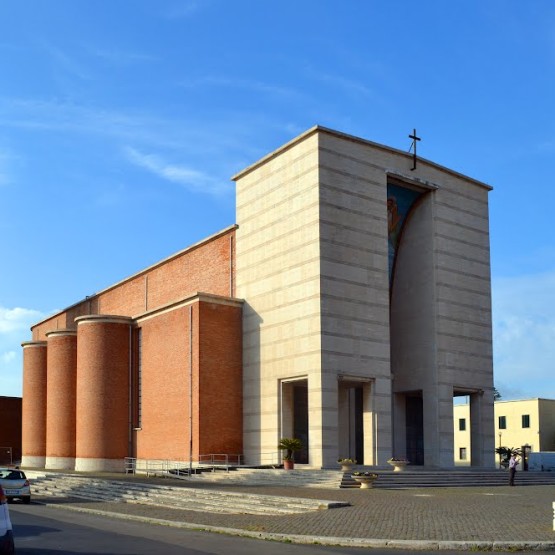
Sabaudia
It is a magical city, bordered by ancient dunes, a luxuriant park that was part of the “forest of Terracina” – a series of protected wetlands and 3 coastal lakes: Lake Paola, Lake Monaci, Lake Caprolace. It is a Fascist city, launched on the 15th of April in 1935. Unlike many of these new urban structures of “simplified neoclassical” architecture by Marcello Piacentini, Sabaudia is a symbol of Italian Rationalism architecture. It was described by Pierpaolo Pasolini as: “The time has permitted to this Fascist architecture, to assume, if you will, a metaphysical and realistic character. (…) How do we explain such a miraculous fact? A ridiculous fascist city, suddenly seems so lovely … “.
Inside the church of Santissima Annunziata, there is the “royal chapel”, donated in 1930 by Queen Margherita of Savoy to the city, originally located in Palazzo Margherita in Rome. On the shores of Lake Sabaudia, there is the church of Santa Maria della Sorresca, dating from the 13th century, although it was originally founded by the Benedictines in the 6th century. The greater public buildings, dating back to the foundation, have rationalistic structure and conception: among them, the Town Hall, with a civic tower and an overlooking square, the church of Santissima Annunziata, with its baptistery, Palazzo delle poste, the hospital and the headquarters of the ancient “National Maternity and Childhood Center”. Exciting and brilliant Palazzo delle Poste, designed by Angiolo Mazzoni, consists of a raised floor by a staircase; it is completely covered by a blue mosaic, the color of Savoy’s house. It has some wide windows that light up the large dining room, framed by a red Siena marmoreal thickness and an elegant cornice. These architectural elements give to the building a strong aerodynamic effect. It was purchased by the city of Sabaudia and finally restored and returned to citizens in 2011. The Villa of Domitian, dating back to the first century A.D., which stretches over 45 hectares along the shores of Lake Sabaudia, and the source of Lucullus, later also used as a paddling, are Roman. Along the coast there are also the Roman port-channel in “opus incertum” and the medieval Torre Paola, on the furthest reaches of the promontory of Circeo. We will have a tour from the sea to the forest, going across the lake and coming up to the top of Circeo that dominates it.
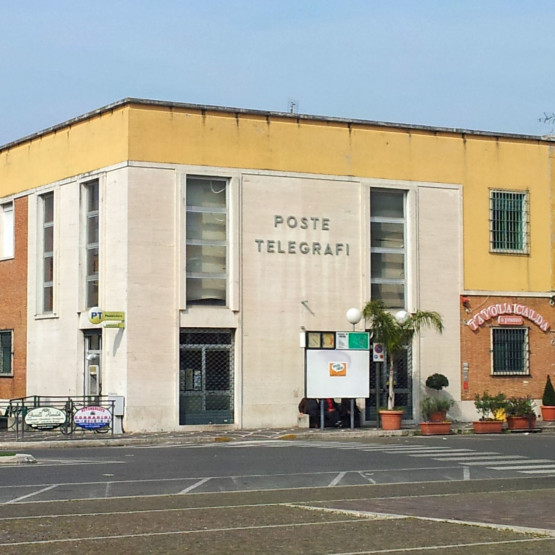
Pontinia
In the countryside here is a foundation city called Pontinia; inaugurated on the 18th of December in 1935, during the reclamation of the Pontine Marshes. The buildings were designed by Eng. A. Pappalardo with Arch. Oriolo Frezzotti that had worked on the town plan and the architecture of Latina. The settlement plan with an orthogonal structure, is rotated at 45 degrees with respect to the structure determined by Miliare roads and reclamation canals. In the center there is the square with the Town Hall, the Post Office, the cinema and the main road that connects to the church. In 1990 a municipal museum entitled “Malaria and its history” was founded as a reminder and a documentation center of the power of the malaria in this area before rehabilitation. The economy of the Pontine area is mainly agricultural and there are many livestock farms. A very unusual landscape that recalls cycling girls, wheat fields, young architects who imagined unseen city, dictators who aspired to immortality constructing towering church spires and working on long arcades with travertine columns. We will visit foundation buildings in the untouched center, where the atmosphere is rarefied: large squares, tree-lined avenues of oaks and palms. We will go cross the Miliare roads in the countryside and discover farms that offer special tastings.

